EXCLUSIVE: Michael Burke, Sidney Toledano Take New Roles at LVMH
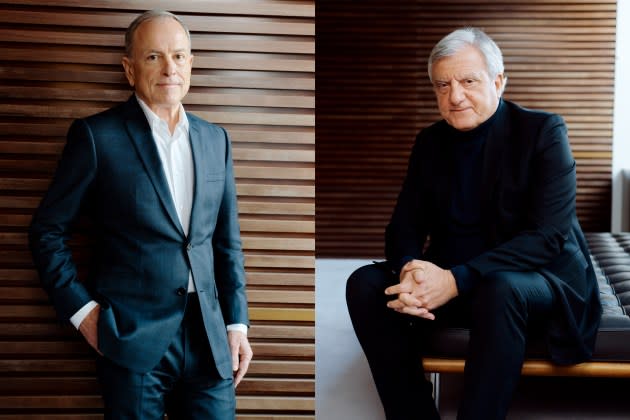
Two of the fashion industry’s most accomplished and admired executives, Sidney Toledano and Michael Burke, are taking on new roles at LVMH Mo?t Hennessy Louis Vuitton, WWD has learned exclusively.
Burke is to succeed Toledano at the head of LVMH Fashion Group, and with a mission that is different from 2018 when Toledano took up the role overseeing Celine, Givenchy, Kenzo, Loewe, Marc Jacobs, Patou and Emilio Pucci.
More from WWD
Meanwhile, Toledano will leave the LVMH executive committee and become an adviser to LVMH chairman and chief executive officer Bernard Arnault, a responsibility he will take up alongside roles at the Paris fashion school IFM, French fashion’s governing body, and family commitments.
“I am not retiring,” Toledano stressed, while citing a wish to reduce his workload and gain more personal time. “It gives me more freedom to look at the market and have a different point of view.”
The handover — Toledano called it “more a transmission than succession” — takes effect Feb. 1 and completes one of the biggest changing of the guards at LVMH in recent memory. It commenced one year ago when Burke stepped down as chairman and CEO of Louis Vuitton after a stellar 10-year tenure, handing the baton to then-Dior chairman and CEO Pietro Beccari, who in turn was succeeded at Dior by Delphine Arnault. She had been Burke’s number two at Vuitton.
As Toledano and Burke settled in for an hourlong interview with WWD in a bright conference room at LVMH headquarters, a photographer at the ready for candid shots, both men rolled their office chairs to avoid the glare of sunlight that might make them squint in photos. The gesture felt like a metaphor for the enormous mutual respect between the two men — not wishing to take too much spotlight, or to leave a beloved colleague alone in the shade.
Not that they minced words about their immense esteem for each other.
“I’m coming into this job standing on the shoulders of a giant,” Burke said. “How do I build upon this incredible success story that Sidney has written over these last years?”
For his part, Toledano said he couldn’t be happier to hand the baton to Burke.
“Who else?” he asked rhetorically, for indeed Burke was the natural candidate to take up the high-profile, multifaceted position. “Yes, he has the experience. Yes, we are friends, and more than that.…We know what the other is thinking without even talking.”
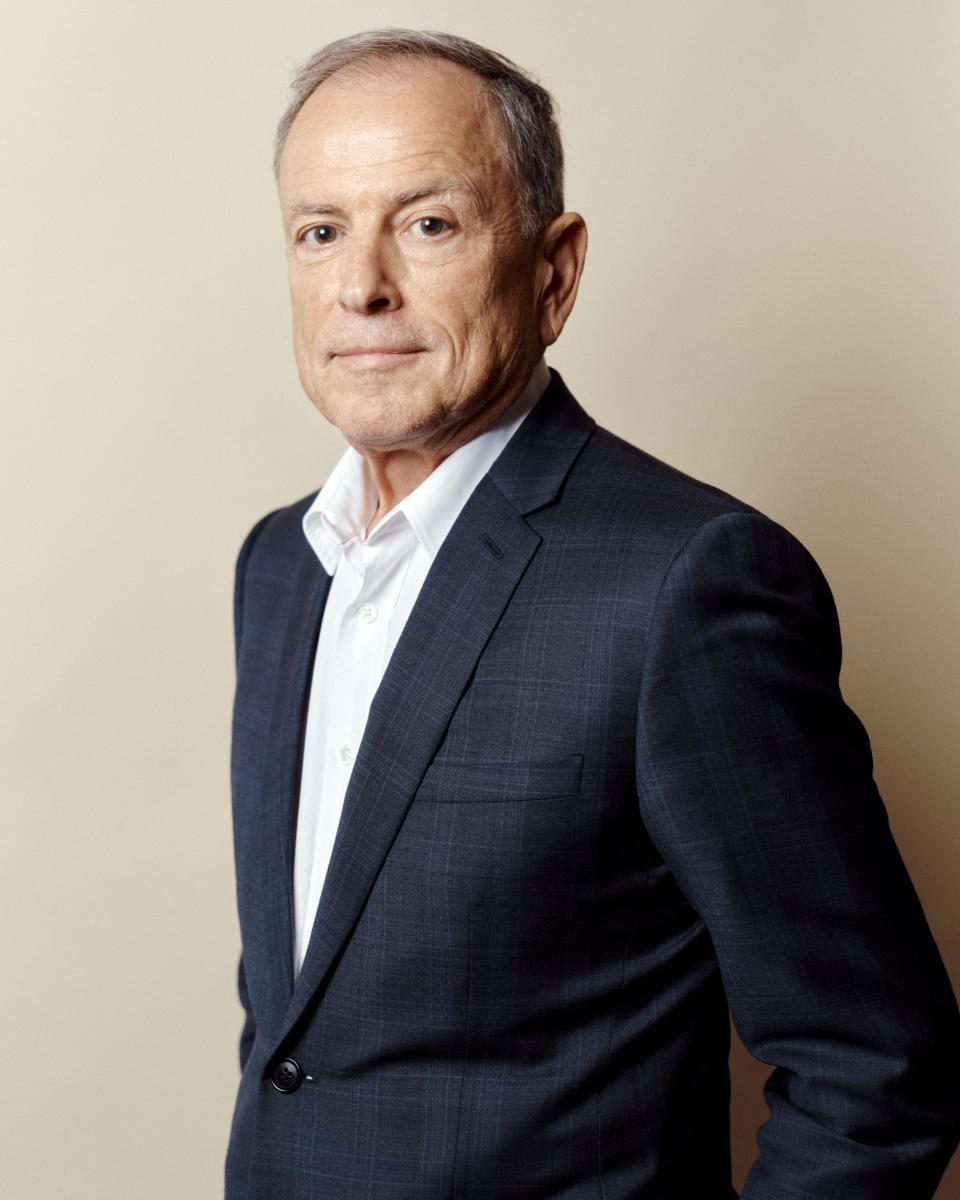
Yet beyond Burke’s experience, and his past successes leading Vuitton, Fendi and Bulgari, Toledano said he’s right for the job “because Michael can do it, and he will have challenges. I told him, ‘Michael, we still have a lot of potential and this mission is for you.'”
To be sure, both men have a solid track record of catapulting companies to new heights and profitable growth, and a strong capacity to interface with creative talents and managers alike.
According to market sources, revenues at the LVMH Fashion Group more than doubled since Toledano took over the division in 2018, with profits multiplying more than eight times.
The chief engines of the growth have been Celine, Loewe and Marc Jacobs, the same sources said.
Burke and Toledano echoed each other in stressing that all brands in the LVMH Fashion Group have enormous development potential, some requiring longer time horizons than others.
And they both agreed that leading them to greatness will require a different approach.
Providing a glimpse of his vision for the LVMH Fashion Group, Burke cited an ambition to make it the industry’s preeminent internal talent pool for creatives and managers — and a place for more risk-taking.
“The second phase of this will be more people-centric because we now have houses that can actually take risks,” Burke said.
Indeed, he characterized the LVMH Fashion Group as “a platform that can be used differently than when Sidney joined because he had to build some of the foundations.”
“A number of the Fashion Group houses now have enough depth and enough heft to be more into risk-taking when it comes to people. That means hiring people, training them and getting them ready for the biggest jobs in the group,” he said.
Does that foretell a host of high-level changes at brands under his purview?
“Not more than necessary,” Burke replied with a smile. “We don’t reposition all brands simultaneously. There is a certain amount of sequencing so that we can do it in depth.
“At any given time, there’s one or two houses that are in need of repositioning, rebuilding, re-dimensioning or redirecting, and with what Sidney has achieved, we now have more freedom to do that.”
In his view, the brands under his purview will need more TLC, of the bespoke variety.
“When you’re in a group as successful as LVMH, you can become a little risk-adverse, because we have a number of formulas that work. And we can at times fall back too much on formulas. What will make these houses successful is remaining true to their iconic status, remaining true to their origins, remaining true to the specificities of each house,” Burke explained.
It is understood Burke’s stable of brands will be expanded to include Fendi, where he was CEO from 2003 to 2012, setting it on an impressive growth trajectory and proving his ability to immerse himself deeply into the culture of a brand and build strong business pillars around it.
In the interview, the executive stressed that design, communication, manufacturing and distribution must be controlled directly by each LVMH maison. “And I will fight like a devil to make sure that the Fashion Group houses will have customized, bespoke tools at their disposition,” he said, stressing, “It’s not about scalability, it’s about uniqueness. It’s about creating unique desires, and unique ways of communicating.”
In Burke’s estimation, the “three enemies” of business success are arrogance, bureaucracy and complacency.
By contrast, he argued that LVMH companies “are always managed with a very positive energy that tomorrow will be better. That’s our fundamental value. We like to have fun, and we’re very passionate about what we do. We don’t aim for the average — we aim high, we aim far into the future.”
Both men frequently lauded Jonathan Anderson’s masterful reinvention of Loewe, whose revenues are believed to be approaching 2 billion euros, fueled by the designer’s daring designs and storytelling built around craft in fashion, film, art and more.
“He came up with an entirely different way of communicating that really resonates with the Loewe customer, and that didn’t come from LVMH,” Burke enthused about the designer, who hails from Northern Ireland and whose dalliances with Loewe’s historic home of Spain had been limited to vacations in Ibiza before he joined the Madrid-based house in 2013.
Near the top of Burke’s to-do list will be helping to decide on the next artistic director at Givenchy following the exit of Matthew M. Williams at the conclusion of his initial three-year contract. He and Toledano sat together at the brand’s menswear show on Wednesday.
During a wide-ranging interview, they steered clear of discussing plans for specific brands, though both men have a reputation for bold recruitment choices — and spectacular business results.
When Phoebe Philo stepped down at Celine at the end of 2017, the appointment of Hedi Slimane as her successor “was not an obvious decision,” Toledano said. “Frankly, if we had used artificial intelligence, I don’t think the software, the algorithm would have given the name of Hedi Slimane.”
Before exiting Dior, Toledano appointed Maria Grazia Chiuri as its seventh couturier — a decision based largely on intuition and soft criteria, and one that has propelled the brand into the stratosphere. Previously, he had worked with John Galliano and Raf Simons at Dior, in addition to Slimane and Kris Van Assche for the men’s universe.
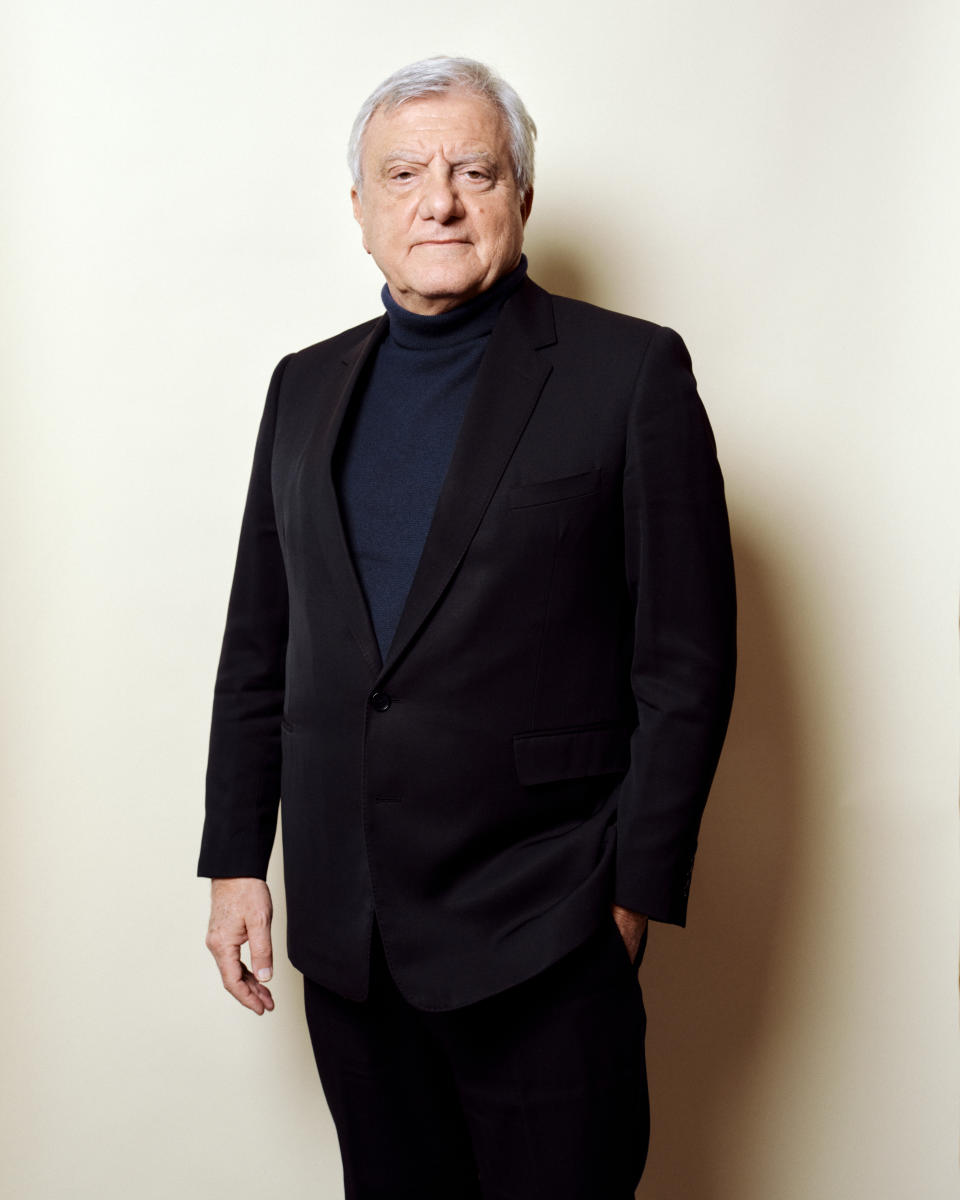
In a press release shared first with WWD, Arnault noted that Toledano “has identified and promoted numerous creative talents who are now among the world’s most recognized designers.”
“With his unique strategic vision, he played a pivotal role in making Dior the world’s most prestigious and admired fashion maison,” while as head of the LVMH Fashion Group, “his creative leadership contributed to the spectacular growth of our fashion maisons, which benefited from his deep experience to further heighten their desirability,” Arnault said.
He noted Toledano would “remain very much involved as my adviser and will continue to share his passion and exacting professionalism with all the group’s teams. He still has a tremendous amount to bring us.”
Among Burke’s masterstrokes was recruiting Virgil Abloh, founder of Off-White, as Vuitton’s artistic director of menswear in 2018, which brought the house buzz, cultural currency and a mold-breaking creative figure whose impact reverberates still. Burke is also said to have had a strong hand in wrangling Japanese streetwear guru Nigo for the top design job at Kenzo.
According to market sources, Vuitton’s revenues tripled during Burke’s tenure, with profitability leaping fourfold.
Commenting on Burke’s latest role in the press release, Arnault noted that the executive has been at his side even before the creation of LVMH, initially working on residential real estate in the U.S. in the early ’80s before joining Christian Dior stateside in 1986.
“He has always been a key player in the group’s success, in particular thanks to the remarkable discernment and finesse of his work at the head of Fendi, Bulgari and Louis Vuitton,” Arnault said. “His extensive experience and his passion for craft and creativity are invaluable assets to pursue and further accelerate the dynamic growth of the maisons in the LVMH Fashion Group.”
Toledano is similarly optimistic.
“I don’t know other groups in the industry already having two giant brands and preparing very big companies as well,” Toledano said, referring to Louis Vuitton and Dior, and his view that “four or five” of the Fashion Group brands harbor potential to be very big.
Both men are firm believers in having the right combination of CEO and creative director, but also matched to the right brand.
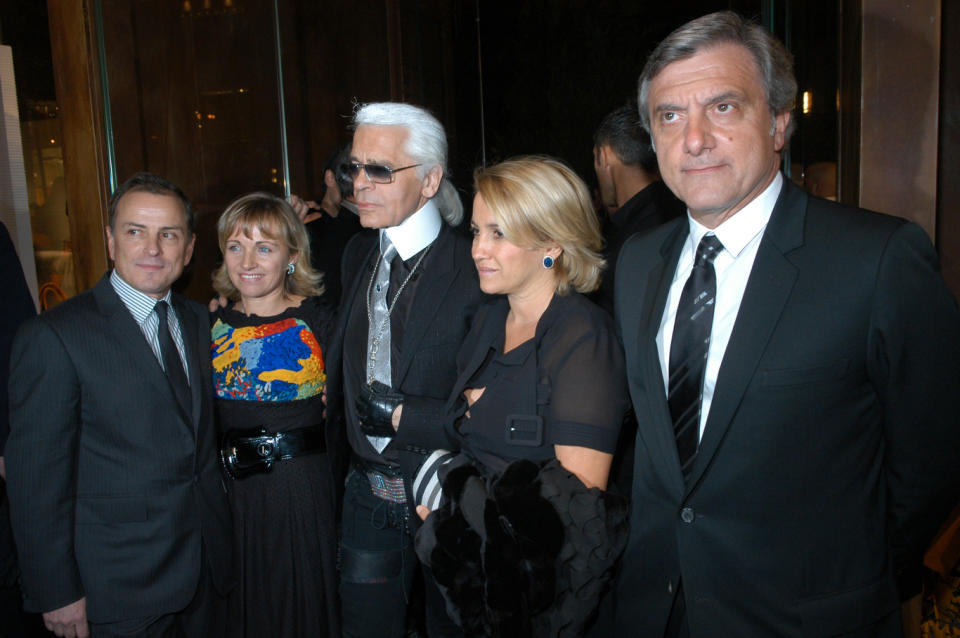
Toledano described it as his “triangle theory,” with the center of gravity in the middle of those three elements. “If you take talented CEO and a talented designer and you give the wrong brand, I’m afraid it will not work,” he said.
“The relationship is an osmosis,” Burke piped in. “You can’t recognize the individual parts once it’s happened. And when that happens, it’s not twice as much or four times as much, it’s 100 times more powerful than something that is management-driven and authoritarian. When the teams notice that this osmosis is occurring, that the triangle is happening, everything comes instantaneously.”
A charismatic, cerebral and well-rounded executive with a fun-loving streak and a ready laugh, Burke is known for his ability to motivate teams, meshing well with creative types and for thriving on complexity.
Born in the French Alps, Burke had a peripatetic childhood since his father was in the air force. He grew up in the U.S., went to high school in Germany and then enrolled in business school EDHEC in Lille, France, going on to work as an intern for an associate of Arnault.
After Dior, Burke next served as president and CEO of Louis Vuitton North America from 1993 until 1997, when he moved to Paris, ultimately becoming Toledano’s number-two position at the fashion house.
After eight years leading Fendi in Rome, Burke was conscripted in 2011 to take up the management helm at Bulgari SpA, which LVMH had acquired earlier that year. He brought two signatures of his brand leadership to Bulgari: surprise and speed.
At the end of 2013, he was moved over to Louis Vuitton, where he initiated an upscaling drive that changed the brand’s fortunes, and scope.
Toledano is perhaps best known for his eventful 18 years as CEO of Christian Dior Couture, nimbly steering the French fashion house through many delicate creative transitions, economic and other crises. He was widely admired for his decisive and dignified handling of John Galliano’s fall from grace in 2011, and managing strong growth in the aftermath, first with Galliano’s deputy Bill Gaytten and then Raf Simons.
Toledano famously expanded the Dior business tenfold, transforming the company from a licensing-driven operation to one centered on control of production and distribution.
An engineer by training, Toledano’s strong financial and analytical skills are married to a passion for the fashion industry. After getting his engineering degree from école Centrale Paris, he started his career at market research firm A.C. Nielsen.
His first step into fashion came when a friend of his invested in French firm Kickers, known primarily for its shoes and children’s clothes. After two years, he was recruited by Lancel — a pivotal move that let him “discover the world of leather goods,” which would become the engine of the luxury goods sector.
In 1993, Toledano joined Dior to help Arnault build a leather goods business for the storied French house. By 1998, he assumed the management helm and initiated its global expansion.
A right brain/left brain type, Toledano has a knack for managing creative leaders, and boasts a gold-plated Rolodex of industry contacts.
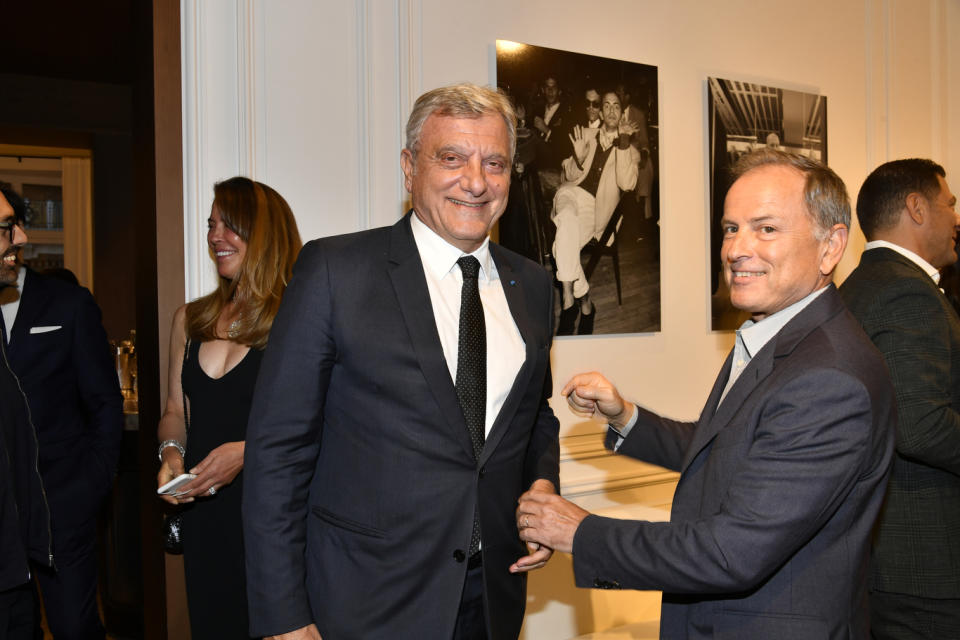
Now as adviser to Arnault, he sees the role extending beyond LVMH companies to other matters and subjects, be it related to a certain geography or creative conundrum. “It will be advice from experience — a connected one, not operational,” he noted.
In the press release, Toledano noted that he and Arnault “share a passion for innovation, creativity, excellence and passing on savoir-faire. It is thanks to his bold vision that the LVMH Group is today a global leader.”
Outside of LVMH, Toledano is chairman of the board of the Institut Fran?ais de la Mode; president of the Chambre Syndicale de la Haute Couture; a member of the Fédération de la Haute Couture et de la Mode’s executive committee, and a board member of French luxury association Comité Colbert.
Best of WWD
